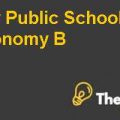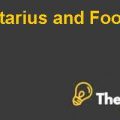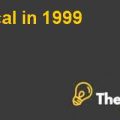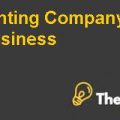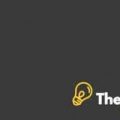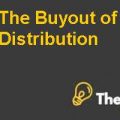Whole foods market: The Deutsche bank report Case Study Analysis
Furthermore, the historical growth rates are used to forecast the growth of sales and asset turnover in the forthcoming years. Looking into the overall annual trends helps in estimating the performance trend of company based on historical performance. A time line long enough is required to detect significant sales and assets’ patterns in the history. If the company experiences steady or slow growth in sales, it is projected that it would keep experiencing similar trend in sales growth in future. The view should be longer enough to be able to detect patterns of sales and asset turnover.
It is typical but yet fairly straightforward way to project forward through looking at the data of historical sales and asset turnover and analyze trends over time. The forecasting based on historic data helps to come up with a quick & fast ballpark projection for the future sales and asset growth. The only concern with this type of forecasting is to assume that the growth and demand would remain same without accounting for the long term fluctuation in the market demand. Additionally, the best forecasting method is the combination of both time series method and machine learning. By doing so, the company could easily attain highly reliable as well as accurate forecasts that tend to work for planning of both short term and long term. The company could improve the return on assets through reducing expenses via enhanced continuous improvement and better management of inventory.
To improve the return on assets, Whole Foods is required to minimize the cost of assets i.e. inventory while exceeding the satisfaction of customers through best in class customer fulfilment rates. Also, the company could synchronize labor operation, maintenance, warehousing, quality and production as a collective whole with sufficient flexibility for the purposeof improving processes to maintain highestperformance on ROA and continuously improve it over a period of time.
Existing Financial Assumptions in the Deutsche Bank Forecast
Taking into consideration the financial assumptions in the Deutsche Bank Forecast, I agree with the forecasted value for only year 2014, which are more realistic than the 2015’s forecasts, because it could be assumed that the sales growth would increase from 10.4% to 11.1%, but it could not be assumed that the sales would increase to 14% in 2015, because it is unrealistically optimistic forecast of sales without any real base. Similarly, the projection for growth of store in 2014 is acceptable because of the similar pattern of growth, but in 2015 the growth should be 11.5% rather than 12.6%. In similar way, the net income should be projected around US$616 for 2015 following the pattern.Considering the EBITDA margin, the growth is on increasing trend due to which the projection for EBITDA margin should increase with 10% in 2014 and 10.5% in 2015. Additionally, the return on capital is accurately projected with a similar pattern of increase in rates for historical years.
The company should take a close look over different parts of the forecast, such as theimpact of changes in competitor price on demand, impact of planned changes inin-store display and assortment, pricing and promotions, have and significant impact on the demand if everything remains same as a baseline sales. Additionally, while forecasting, it is significantly important to consider the demand patterns and competitor’s offerings and pricing to estimate the company’s growth in a competitive environment.(Saffo, 2007 ).
Conclusion
Whole Foods was evolved into the trending& world’s largest retail chain of natural & organic foods supermarkets.Whole Foods sought to provide its customers least processed, highest quality, naturally preserved as well as most flavorful foods. Since going public, the growth strategy of Whole Foods had been focused towards expanding the business operations throughmixture of acquiring owner managed and small chains located in desirable markets and opening new stores.The competition of the company is based on the selection of product, quality of product, services provided to customers and their prices or all in one combination. The sustainability of the competitive advantage of company is hugely dependent on the inability and unwillingness of the market competitors to target the organic market.In 2008, the company enjoyed an increased growth in sales from 2003 to 2008 due to its continued efforts on expanding its store count and increasing the existing store’s sales.A time line long enough is required to detect the significant sales and assets patterns in the history.While forecasting it is significantly important to consider the demand patterns and competitor’s offerings and pricing to estimate the growth of the company in the competitive environment...........................
This is just a sample partical work. Please place the order on the website to get your own originally done case solution.

